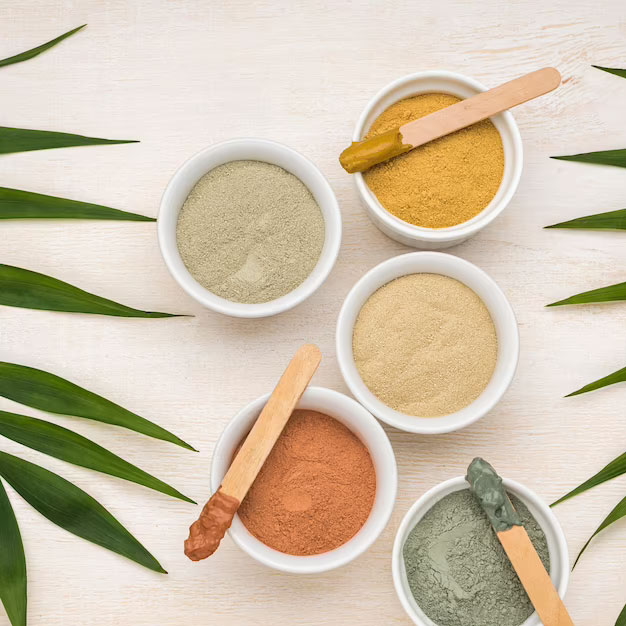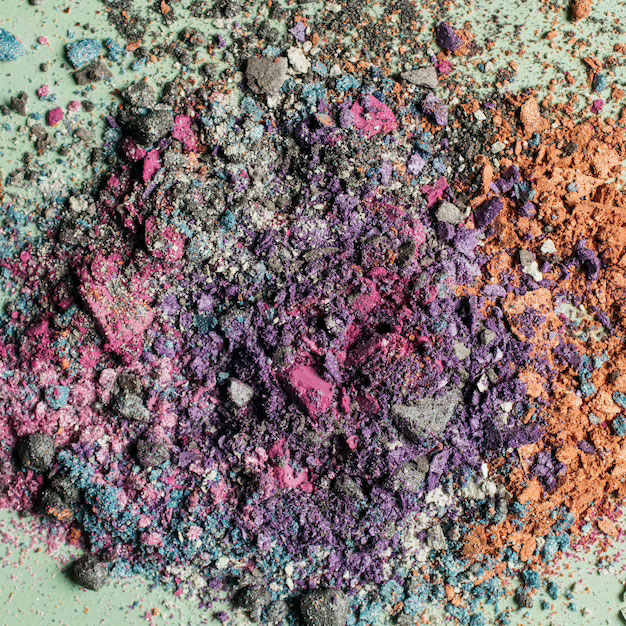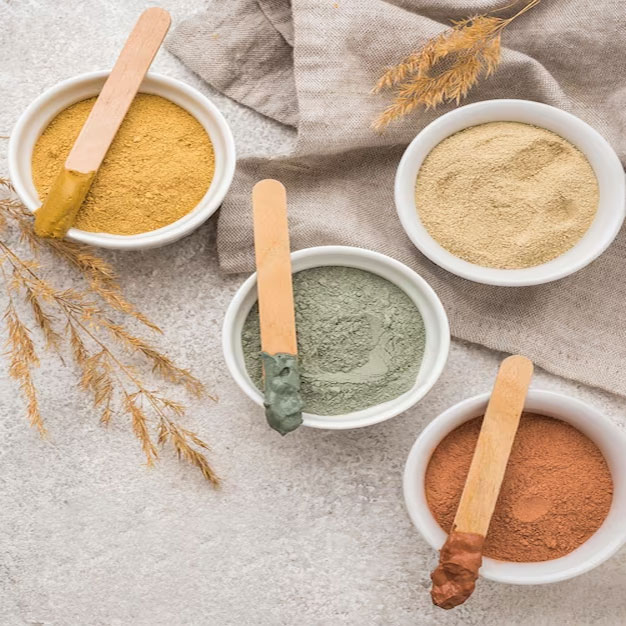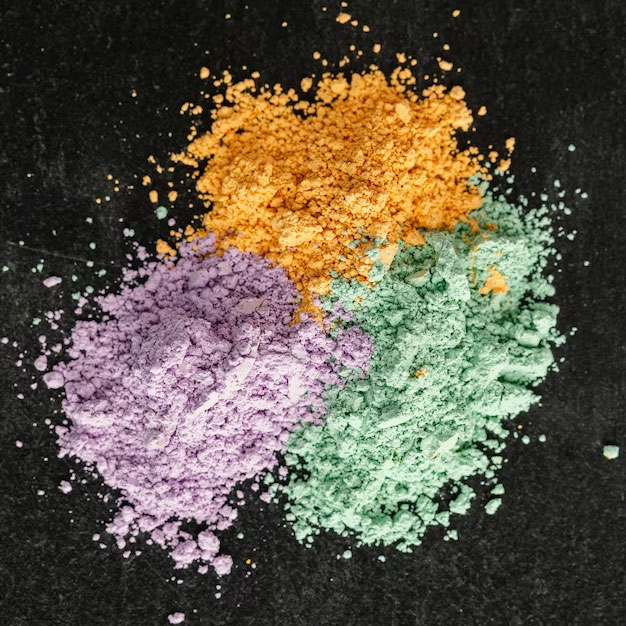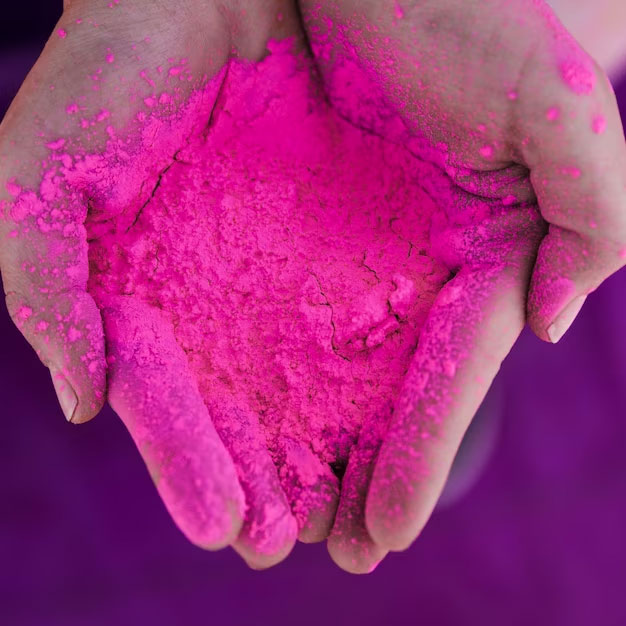Manufacturer, Supplier & Exporter of
a wide range of Dyes, Pigments & Food Colours
Pigments
The pigment colour definition states that a substance that alters the colour of reflected or transmitted light by selectively absorbing certain wavelengths is known as a pigment. The primary function of pigments is to provide colour to materials like textiles and paints. Although pigmented colour and dyes are frequently conflated, they differ significantly in terms of solubility.
Unlike dyes, which can dissolve in a liquid by themselves, pigments require a binder to dissolve in a liquid. While dyes are widely employed in the textile and paper industries, pigments find use in colouring paints, inks, cosmetics, and plastics.
Megha International is a prominent pigments manufacturer, renowned globally for its provision of an array of dyes, optical brightening agents and food colours. As a top-tier pigments supplier based in India, Megha International has established itself as a recognized name across the world. We take pride in being an pigments exporter, catering to numerous industries across several countries.
Are you looking for Pigments? Transform your materials into vibrant masterpieces!
Buy High quality Pigments at Best Price - Megha International

Types of Pigments
The Type of pigment depends upon various applications. Some of them are listed below: –
These pigment colour powder are derived from carbon-based compounds and are known for their bright colours and good tinting strength. They are widely used in the production of paints, inks, plastics, and textiles.
These pigments are derived from minerals and metals and are known for their stability and durability. They are widely used in the production of ceramics, glass, and cement, as well as in paints, coatings, and plastics.
These pigments are derived from natural sources such as plants, animals, and minerals. They are used in traditional art and are also gaining popularity in modern applications due to their eco-friendly nature.
These pigments are produced through chemical processes and are known for their consistent colour and performance. They are widely used in the production of paints, inks, and plastics.
These pigments absorb and emit light at different wavelengths, creating a fluorescent effect. They are used in applications such as safety clothing, traffic signals, and novelty items.
These pigments are made from metal powders and are used to create metallic effects in paints, coatings, and plastics. They are commonly used in the automotive and aerospace industries.
These pigments do not contain any lead, which is a toxic substance. They are used in applications where environmental and health concerns are a priority.
These pigments are added to coatings and paints to prevent corrosion of metal surfaces. They form a protective layer that prevents moisture and other corrosive agents from reaching the metal surface, extending the life of the coated material.
To know more in details about the classification of Pigments
Pigments Manufacturing Process
The manufacturing process for pigments carried out by different pigment manufacturers typically involves several steps. Here is a general overview:
- Raw Material Selection: The first step involves selecting the raw materials based on the desired colour and application of the pigment. The materials can be either organic or inorganic in nature.
- Grinding and Dispersion: The selected raw materials are ground into fine particles and then dispersed in a liquid medium using specialized equipment such as a bead mill or a ball mill. This helps to achieve a consistent particle size and distribution.
- Chemical Treatment: The dispersed pigments are treated with chemicals to improve their performance, stability, and durability. This can include processes such as calcination, roasting, or oxidation.
- Drying: After the chemical treatment, the pigments are dried to remove any excess moisture and to achieve the desired level of dryness.
- Packing: The final step involves packing the pigments into suitable containers for transportation and storage. The packaging material must be able to protect the pigments from light, heat, and moisture.
Overall, the manufacturing process for pigments can vary depending on the type of pigment being produced and the intended application.
Pigments Properties / Characteristics - Pigment Manufacturer in India
Colour pigment powder has a variety of properties that make them suitable for different applications. Some of the most important properties include:
- Colour Strength: This property refers to a pigment’s ability to produce intense and vibrant colours in a given medium. The colour strength is influenced by factors such as the purity of the pigment, particle size, and concentration.
- Lightfastness: Pigments with good lightfastness can resist fading or changing colour when exposed to light over time. This property is essential for pigments used in outdoor applications, such as paints and plastics.
- Chemical Resistance: Some pigments have excellent chemical resistance, meaning they can maintain their colour and stability when exposed to acids, alkalis, and other chemical substances.
- Heat Stability: Pigments must be able to withstand high temperatures without breaking down or losing their colour. This property is important for pigments used in high-temperature applications, such as ceramics and automotive coatings.
- Dispersion: Pigments must disperse uniformly in a liquid medium to achieve the desired colour and consistency. The particle size, surface area, and dispersant type can all affect a pigment’s dispersion properties.
- Toxicity: Some pigments contain toxic substances, such as lead, cadmium, or chromium. The toxicity of a pigment must be considered when selecting a pigment for a specific application.
- Particle Size: The particle size of a pigment can affect its colour strength, transparency, and application properties. Pigments with smaller particle sizes tend to have better dispersion properties and produce brighter colours.
Overall, the properties of pigments play a crucial role in determining their suitability for different applications. Pigment manufacturers in India like Megha International carefully consider these properties when developing new pigments and selecting pigments for specific applications.

Advantages of Pigment
The use of pigment offers several advantages for a variety of applications. Here are some of the most significant advantages of using pigments:
- Colour Variety: Pigments offer an extensive range of colours, shades, and tones, making it possible to achieve almost any colour imaginable.
- Colourfastness: Pigments have excellent colourfastness, which means they can maintain their colour and vibrancy over time, even when exposed to harsh environmental conditions.
- Versatility: Pigments are versatile and can be used in a wide range of applications, from paints, plastics, and inks to textiles, ceramics, and cosmetics.
- Cost-Effective: Pigments are often more cost-effective than dyes, which can be more expensive due to their solubility and application process.
- Resistance to Chemicals: Pigments have excellent chemical resistance, which means they can withstand exposure to acids, alkalis, and other chemical substances without losing their colour or integrity.
- Stability: Pigments are stable and do not break down chemically, making them ideal for long-term use in various applications.
- Non-toxic: Many pigments are non-toxic, which means they do not pose a risk to human health or the environment.
Overall, the advantages of using pigments make them an excellent choice for many different applications. With their extensive colour range, colourfastness, versatility, and cost-effectiveness, pigments are an essential component in the manufacturing of many products.
Applications of Pigments
Pigments are extensively used in a variety of applications across various industries. Here are some of the most common applications of pigments:
- Paints and Coatings: Pigments are used in the production of paints and coatings to add colour and opacity to the product. They also improve durability, UV resistance, and other performance characteristics.
- Plastics: Pigments are used in plastics to add colour and improve the product’s visual appeal. They also enhance UV resistance, chemical resistance, and other properties.
- Inks: Pigments are used in the production of inks for printing, writing, and other applications. They provide colour, brightness, and opacity to the ink and improve adhesion to the substrate.
- Textiles: Pigments are used in the production of textiles to add colour and improve the product’s colourfastness. They also enhance the product’s resistance to fading and other environmental factors.
- Cosmetics: Pigments are used in the production of cosmetics, such as lipsticks, eye shadows, and foundations. They provide colour and improve the product’s visual appeal.
- Ceramics: Pigments are used in the production of ceramics to add colour to the product. They also improve the product’s resistance to fading and other environmental factors.
- Printing: Pigments are used in the production of printing inks for newspapers, magazines, and other printed materials. They provide colour and improve the product’s performance characteristics, such as print quality and adhesion.
Overall, pigments play a vital role in the manufacturing of various products across many different industries. Their ability to add colour, improve performance, and enhance visual appeal make them an essential component in many applications.
About Megha International
Looking for a Pigments Exporter for brazil?
Megha International (ISO 9001: 2008) Established in the year 1995, at Mumbai, India is the leading organic pigment manufacturers in India that offers an extensive range of pigments and completive pigment colour price in national as well as international markets. Our research and development team carries out constant studies to develop products that reliably set us apart from our competitors and serve our clienteles best. With a remarkable focus on innovation and leveraging new-age expertise, we endeavour to sustain and develop a leading organization on a global scale. The company is among the top 10 pigment manufacturers in world, and is striving to deliver the finest quality of products to the consumers, while being environmentally sensitive.
Market Area of Megha International
As a prominent Pigments supplier, Megha International is proud to export Pigments in a wide range of countries across the globe. Our reach extends to many countries in Asia, including China, Vietnam, Singapore, Thailand, Malaysia, Korea, Philippines, Japan, and Indonesia.
We also serve clients in the Middle East, such as UAE, Saudi Arabia, Kuwait, Qatar, Iraq, and Iran.
In North Africa, we have clients in Algeria, Morocco, and Tunisia, while in Europe, we offer our services to Russia, the UK, France, Italy, Germany, the Netherlands, Romania, and Poland.
In South America, we serve clients in Brazil, Argentina, Colombia, Peru, and Guatemala, as well as in Central America, including Mexico, Costa Rica, and Honduras.
Finally, we also provide our services to clients in the United States and Chile. No matter where our clients are located, we are committed to delivering high-quality dyes and exceptional customer service.
Frequently Asked Question about Pigments
Pigments are materials that change the colour of reflected or transmitted light as the result of wavelength-selective absorption. In other words, they selectively absorb certain wavelengths of light to create a specific colour.
There are several types of pigments, including organic, inorganic, natural, synthetic, fluorescent, metallic, lead-free, and anti-corrosive.
Pigments used in cosmetics undergo rigorous testing to ensure their safety for use on the skin. It is important to use pigments that have been approved for cosmetic use.
Pigments are insoluble in water and require a binder to be dispersed, while dyes are soluble in water and can be easily absorbed by materials.
Pigments are made through a variety of processes, depending on the type of pigment. Common methods include chemical synthesis, precipitation, and grinding.
Pigments have a variety of properties, including color, opacity, tinting strength, hiding power, lightfastness, weatherability, and chemical resistance.
Pigments offer a range of benefits, including the ability to add color, improve durability, enhance visual appeal, and provide resistance to environmental factors such as light, heat, and weathering.
Pigments are used in a variety of applications, including paints and coatings, plastics, inks, textiles, ceramics, printing, and cosmetics.
When selecting pigments for a specific application, factors such as color, performance characteristics, environmental factors, and regulatory compliance should be taken into account.
Yes, pigments can be mixed together to create new colors. This is commonly done in the manufacturing of paints and other colored materials.
Some pigments, particularly heavy metals such as lead-based pigments, can have negative environmental impacts. However, there are also many pigments available that are eco-friendly and non-toxic.
Yes, pigments can be used in 3D printing to create colored 3D prints.

